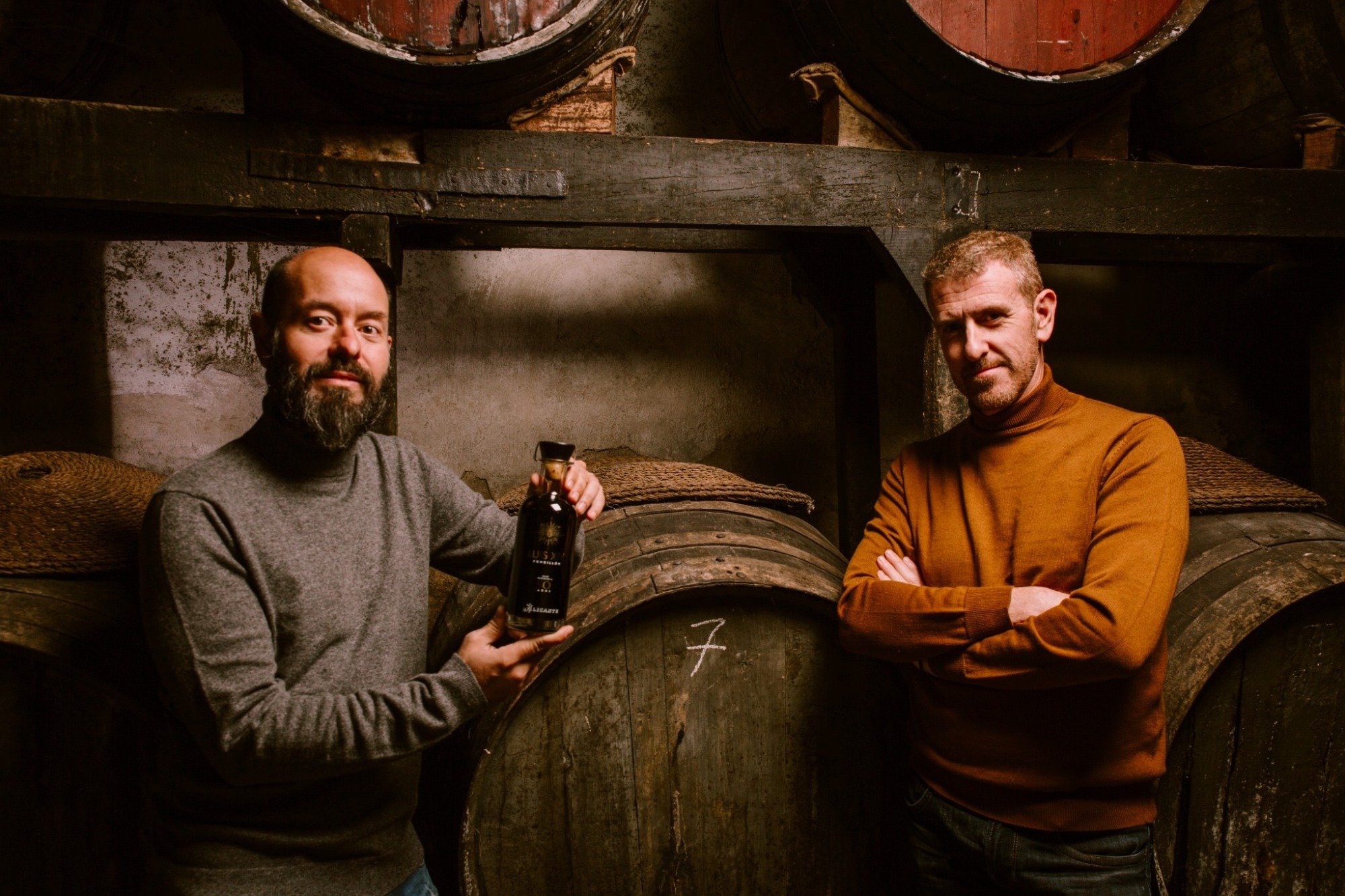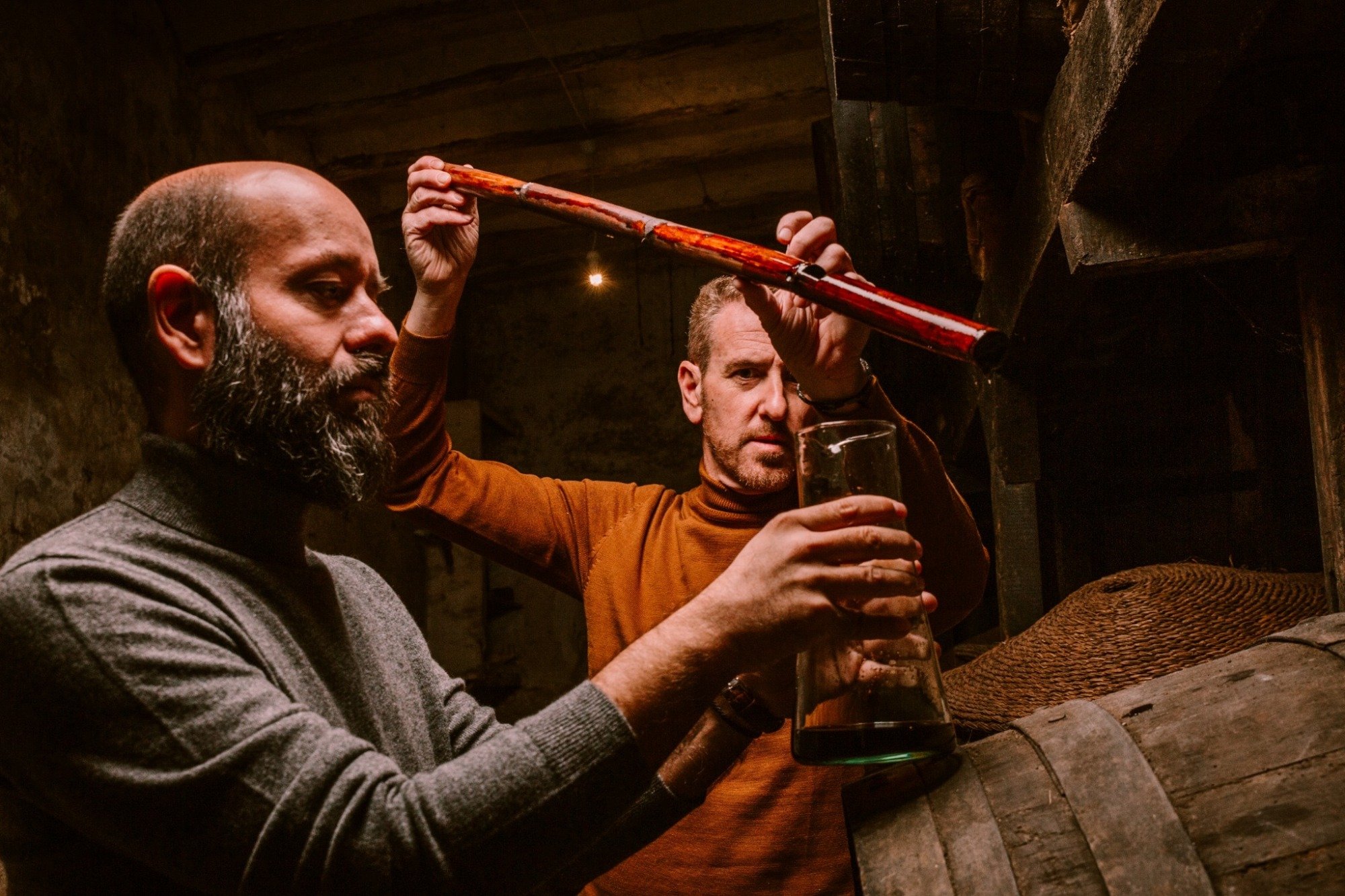Colección de Toneles Centenarios Fondillón Luis XIV 50 Anos

| Type of Wine | Red |
|---|---|
| Country | |
| Region | |
| Winery | |
| Grape | |
| Content (Alc) | 0.5 ltr (16%) |
| Drink window | 2020 - 2035 |
Description
The Colección de Toneles Centenarios company was born from an extraordinary treasure: the barrel room of the Ferrero wineries, an old wine-producing winery in Alicante, located in the city of Cañada, Alicante. They found 25 old barrels that have been forgotten for more than 60 years. The barrels contained extremely old and also extremely expensive wines. Only 435 half liter bottles of this unique wine were filled and packed in an individual wooden box. The main cap is made of tinted wood with extra natural cork pin. The barrel from which it was bottled is from Saboners older than 50 years (single barrel) and is 19th century American oak.
Subtitled Edad Superior a 50 años (over 50 years old), NV Fondillón Luis XIV is a dark amber wine bottled from one cask with the specific profile of a very old wine. It has notes of bitter chocolate, coconut and iodine and some bittersweet sensations. It is dense and concentrated, and the taste is sharp, fresh, with very intense flavors and a bitter twist in the aftertaste. This has 16.3% alcohol, 6.45 grams of acidity and 34 grams of sugar, but it comes across as very dry with an impressive freshness for a wine over 50 years old. The finish is extremely long and extraordinary, and after decades of concentration through evaporation, it has a completely unique character for a Fondillón character. A Fondillon is one of the most important historical wines that has the oxidative effect of a sherry and the fresh sweetness of port, but with a very big difference, which is that a Fondillón may not have added alcohol as is the case with Port.
Fondillón's 4 characteristics:
- Denomination of Origin Alicante.
- Monastrell grape.
- Minimum of 10 years aging and aging in oak barrels
- Minimum of 16º or natural alcohol, never added alcohol.
The Fondillón comes from the Alicante region and thus has naturally reached its high alcohol content and belongs to one of the most important historical wines in Europe. It should only be made with 100% Monastrell grape from Alicante. That high natural alcohol is achieved through the ripening of the grapes on the vine itself, which promotes both the highest level of aromas and flavors of the Monastrell grape, passing through the "solera" system during the fermentation and aging process. Through this system, during bottling, a portion of each barrel is tapped to the next, filling the decay with old wine from the best selection of Monastrell grape, the main variety of Alicante. The production and aging is done with all the care and attention that a noble wine requires.
Specifications
| Type of Wine | Red |
|---|---|
| Country | Spain |
| Region | Alicante |
| Winery | Colección de Toneles Centenarios |
| Grape | Monastrell, Mourvedre |
| Biological certified | No |
| Natural wine | No |
| Vegan | No |
| Drinking as of | 2020 |
| Drinking till | 2035 |
| Alcohol % | 16 |
| Alcohol free/low | No |
| Content | 0.5 ltr |
| Oak aging | Yes |
| Sparkling | No |
| Dessert wine | Yes |
| Closure | Cork |
| Parker rating | 95 |
| Tasting Profiles | Earthy, Rustic, Complex, Dark fruit, Dry, Aged on wood, Powerful, Tannines, Full |
| Drink moments | Barbecue, Cadeau!, Indruk maken, Lekker luxe, Met vrienden |
Wijnhuis
The Colección de Toneles Centenarios company was born from an extraordinary treasure: the barrel room of the Ferrero wineries, an old wine producing winery in Alicante, located in the city of Cañada, Alicante. There they found 25 old barrels that have been forgotten for more than 60 years. The barrels contained extremely old and also extremely expensive wines.
The family still has 25 hectares of vineyards, from which they resume the production of wines destined to produce Fondillón. Fondillon is a completely separate category of wine and is a sweet, undistilled wine made from extra ripe Monastrell grapes that are harvested later than normal, before being pressed, fermented with the skins and then aged in oak for at least ten years barrels. It is located in between a sherry and a port, but an important element is that the wine is not fortified, so it consists purely of the grapes.
The Fondillón comes from the Alicante region and has thus naturally reached its high alcohol content and belongs to one of the most important historical wines in Europe. It should only be made with 100% Monastrell grape from Alicante. The high natural alcohol value is achieved by ripening the grapes on the vine itself, which promotes both the highest levels of aromas and flavors of the Monastrell grape, produced by the solera system during the fermentation and aging process. Through this system, one portion of each barrel is tapped into the next when bottled, filling the decay with aged wine from the finest selection of Monastrell grape, Alicante's main variety. The production and aging is done with all the care and attention that is required by a noble wine.
The Fondillón was born in the former orchard of the city of Alicante and later spread to the neighboring area of Vinalopó where it currently produces wines. It was one of the most prestigious wines in the world until the phylloxera crisis and industrialization led to the disappearance of many wineries. Fortunately, this wine is coming back all the way and there are a number of high-quality wine companies that supply this beautiful wine, with Colección de Toneles Centenarios being very much at the top. Especially with their Fondillón Luis XIV of more than 60 years old, but also the 25-year-old version are very beautiful with very high international ratings. They are pricy wines, especially given the very long maturation, but actually only a fraction compared to some Sauternes.
The 4 characteristics of Fondillón:
- Denomination of Origin Alicante.Monastrell grape
- Minimum of 10 years of aging and aging in oak barrels
- Minimum of 16º or natural alcohol, never added alcohol
Since the grapes remain on the bushes to dry in (as is done for example in Puglia at Primitvo and is called appassimento there, but is also in principle the same as an Amarone) it also has to cooperate again. When autumn sets in early and the rains start, the grape cannot build up the sugars to create the minimum natural 16% alcohol, so these wines can always be made in the good years, and every year again poses the question whether it will work. The final wine is always a Non Vintage and the barrels therefore contain the blend of various years.

Reviews
Attachments








